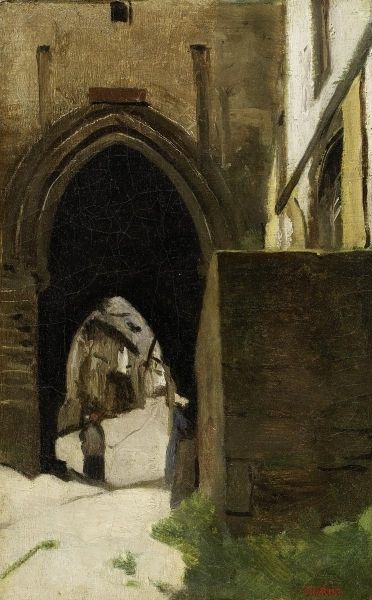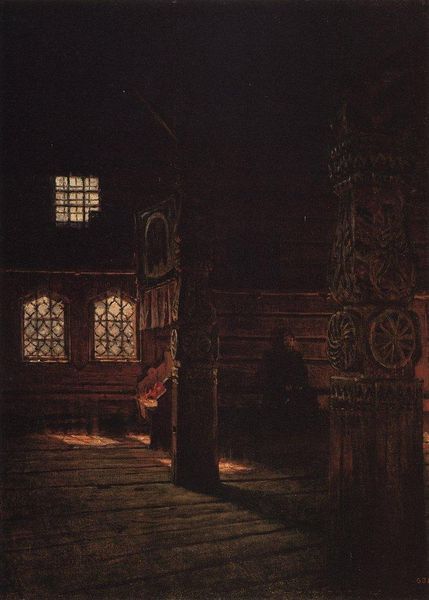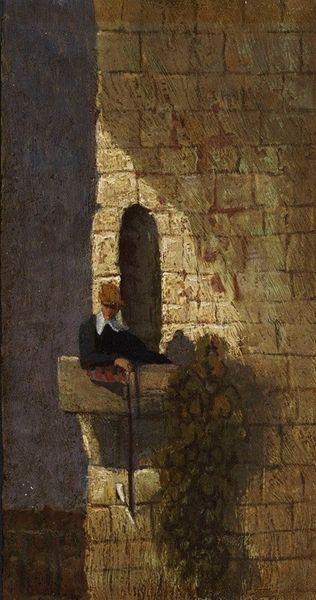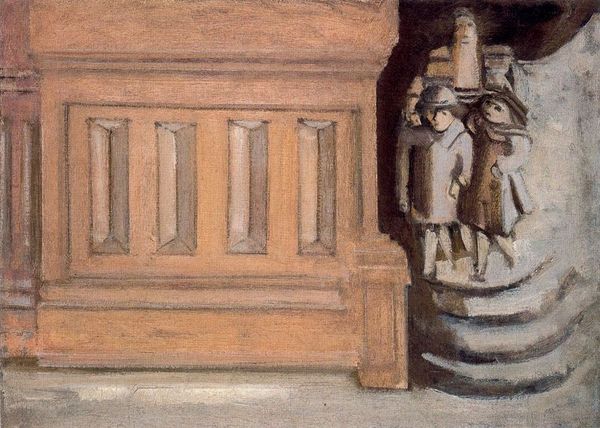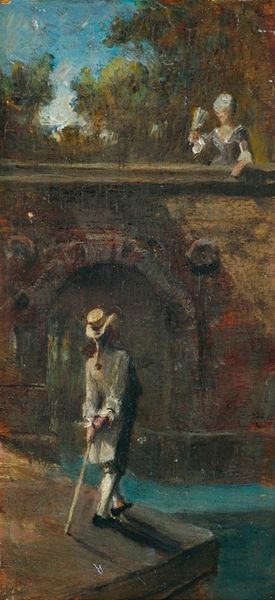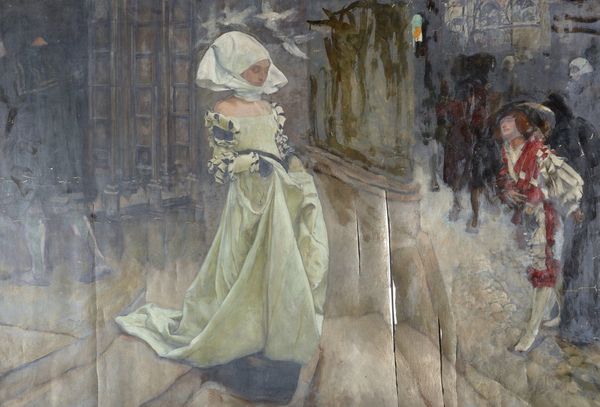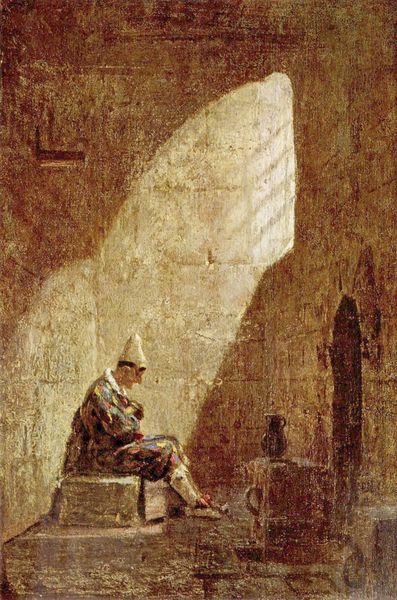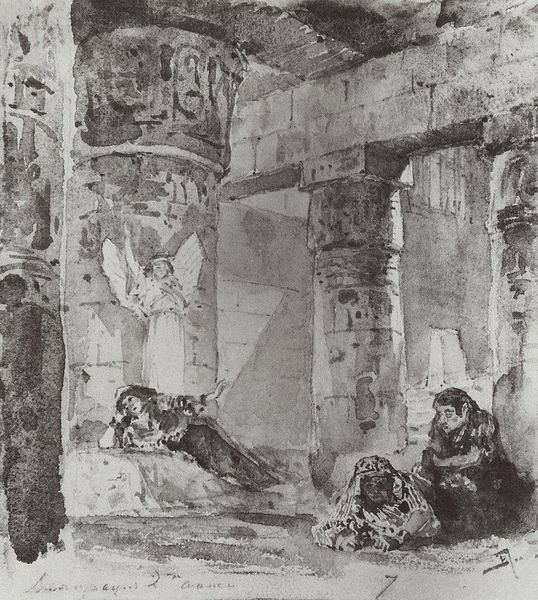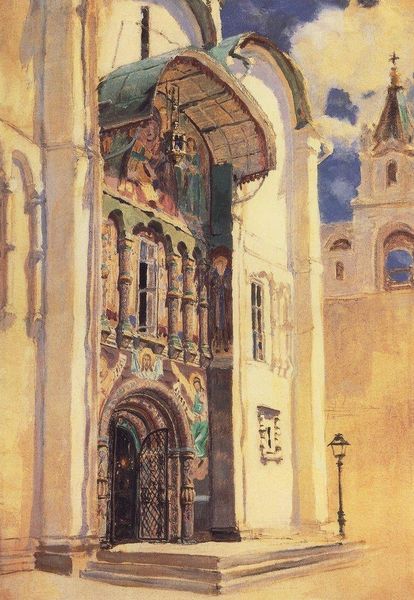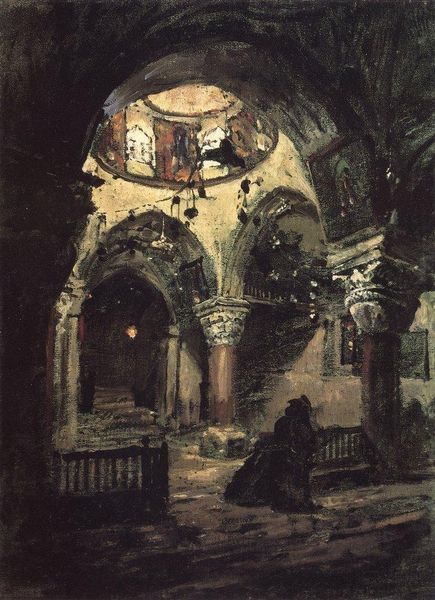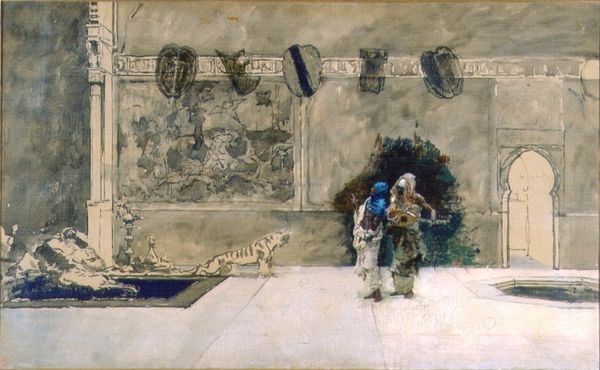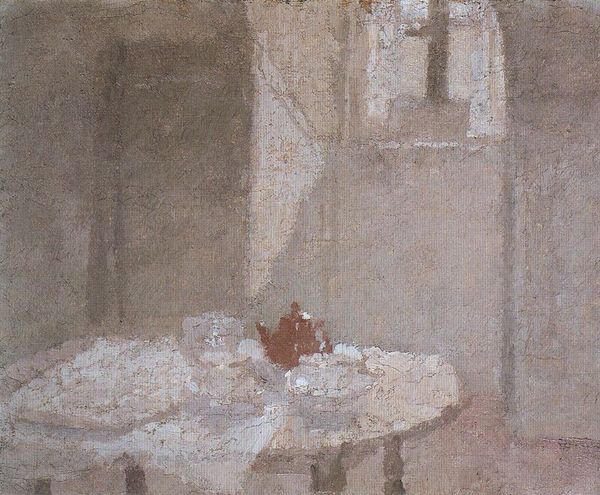
Copyright: Public domain
Editor: This is "The Entrance Door to the Church Under the Kazbek," an oil painting by Vasily Vereshchagin from 1897. It's undeniably somber, the dark door contrasts sharply with the weathered stone. What do you see in this piece beyond just a church entrance? Curator: I see a visual representation of marginalized narratives intertwined with power structures. Vereshchagin, known for his anti-war sentiments, was deeply critical of imperial power. Think about this church – likely a site of significant religious and social power in its time – now depicted as aged and, frankly, quite neglected. Editor: That’s an interesting point. The decay is hard to ignore. Is the figure to the side relevant here? Curator: Absolutely. The figure beside the door – we can presume, given their placement at the entrance, that they are forbidden to enter - embodies those displaced and excluded by those power structures. Consider too that religious institutions are often central to colonial projects – instruments of both cultural imposition and control. Do you see a relationship between the derelict state of the church and the state of the individual at the entrance? Editor: So the church’s disrepair could be read as a visual critique of the failures of these systems? And that person at the entrance is almost a direct result of these broken systems. Curator: Precisely. It forces us to confront the human cost of institutional failings and the ongoing struggle for access and inclusion. What do you take away from this, reflecting on today’s issues? Editor: It hits differently knowing the historical context. Now I see a potent reminder that cultural artifacts often bear witness to social and political power imbalances. Curator: Indeed, art gives us a portal into crucial dialogues about equity, historical culpability and ongoing power relations.
Comments
No comments
Be the first to comment and join the conversation on the ultimate creative platform.
